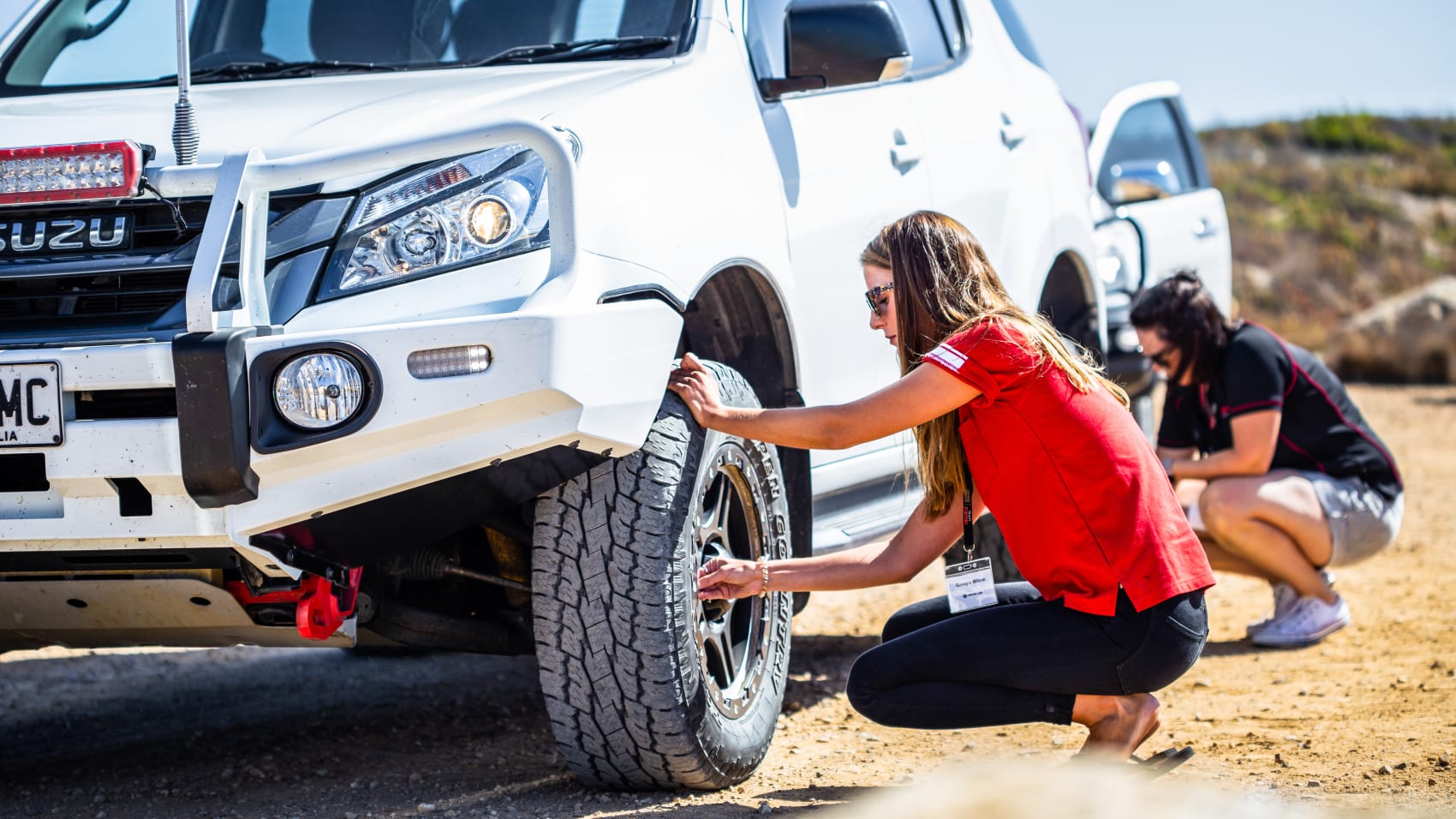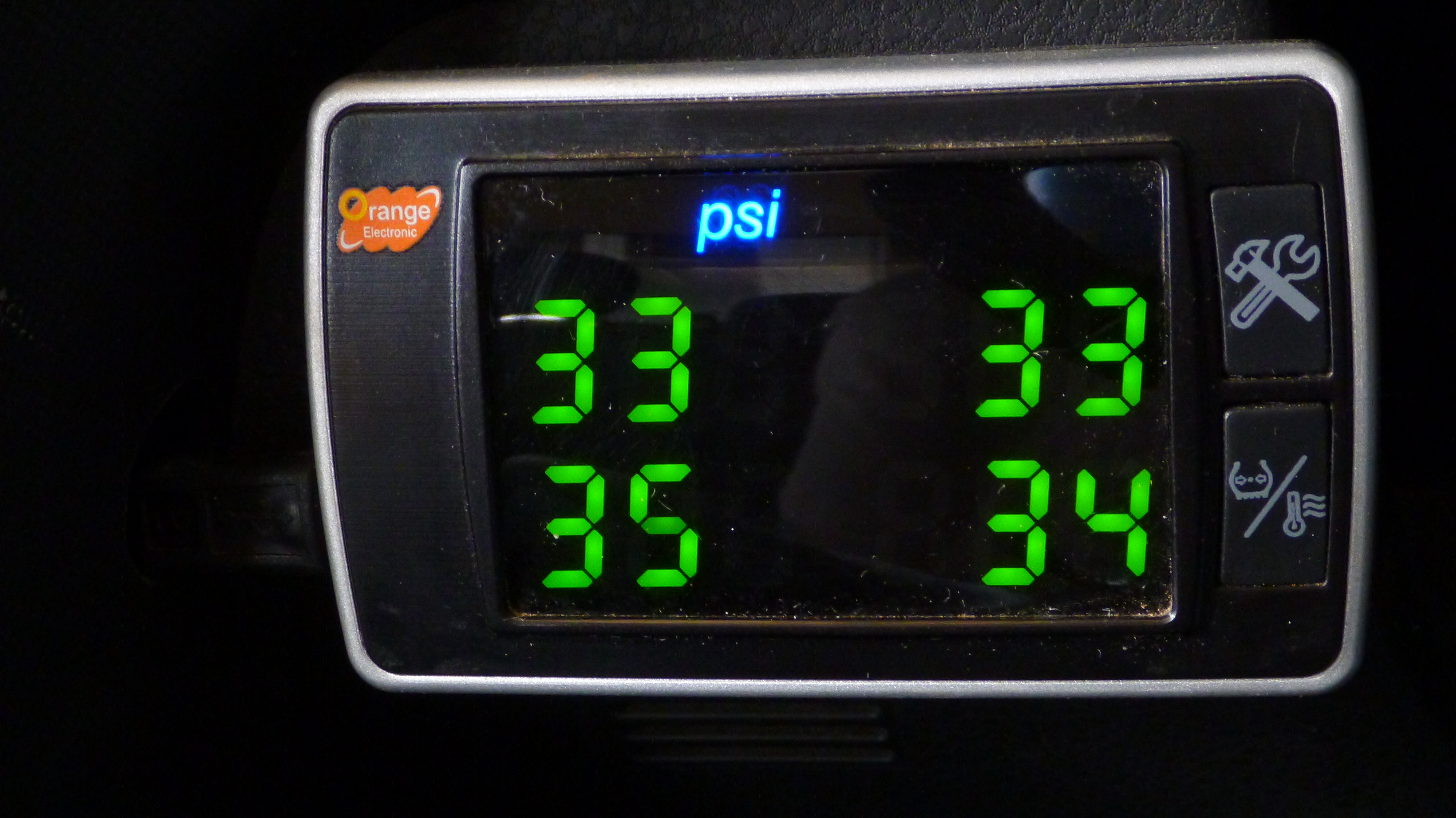Most people know (well, usually) that airing down your tyres when you hit the dirt can make a big difference. Change the tyre’s footprint, and you change the vehicle’s potential. But there’s one key principle that should always stay front and centre when adjusting pressures: the relationship between pressure, load, and speed.
Change any one of those, and you’ll need to adjust at least one of the others to balance it out.
Let’s unpack how that works.
Bitumen baseline, dirt adjustments
You start your day on bitumen, running what I call a baseline pressure. That number might come from the vehicle’s placard or someone who knows what they’re talking about, like my go-to tyre whisperer, Steve Burke from Toyo Tires Australia.
At those bitumen pressures, your tyres are built to carry the load at posted highway speeds without fuss. But when the sealed road turns to dirt, you can help your tyres do their job better with a pressure drop.
Far too many tyre failures on dirt roads are caused by overinflation. I see it all the time. Running highway pressures on rough surfaces, and then throwing in speed, is a perfect recipe for chipping tread blocks, wrecking sidewalls, or worse.
If you’re lucky, you’ll just tear up the tread. If not, a rock puncture can begin a slow leak that turns into a rapid deflation, builds heat, fatigues the sidewalls, and ultimately leaves you with a shredded ring of rubber and an expensive day out.
Enter my 20% rule
Let’s say we’re dealing with a mid-sized dual-cab ute, think D-MAX, Ranger, Hilux, Triton. If your bitumen pressure is 250kPa (36psi), then on a long dirt road or outback track, drop both pressure and speed by 20%.
That brings you down to 200kPa (29psi), and you keep your speed at 80km/h or less. The reward? Better grip, more predictable cornering, shorter braking distances, and far less tyre damage.
And as the track gets rougher, you keep airing down, and slowing down.
Corrugations and clay: find the sweet spot
Corrugated roads are everywhere in the Aussie outback, and no, driving faster to “float over the tops” isn’t a smart idea. That’s just how you crash harder and blow more tyres.
Instead, keep letting air out and reducing speed. On bad corrugations, I often find a sweet spot at 60 to 70km/h with pressures around 175kPa (25psi). On the very rough stuff, I might go down to 135kPa (20psi), where the sidewall flexes and the suspension doesn’t have to work as hard.
I’ve used that same pressure in the high country of Victoria on slippery, clay-based tracks where grip was almost non-existent at higher pressures. On sand or rock, like the Flinders Ranges, that 135kPa (20psi) is often my starting point. If needed, I’ll drop further.
- 125kPa (18psi) is good for about 50km/h.
- 100kPa (15psi) is good for about 40km/h.
In the past, 100kPa was considered the point where you needed to be careful. These days, with the rise of 19” and 20” inch wheel packages on many 4WD wagons, I advise folks to think of 135kPa (20psi) as the new caution point.
That’s because larger diameter wheels have shorter, stiffer sidewalls. Less flex means higher risk of unseating the tyre from the rim during aggressive manoeuvres like sudden steering, braking, or acceleration.

Emergency pressure drops
Sometimes, things get serious. Bogged on a beach, stuck in a swamp, or misjudging a tide. These are emergency moments, and going below 100kPa might be the only way out.
I’ve gone as low as:
- 82kPa (12psi)
- 69kPa (10psi)
- 55kPa (8psi)
- 41kPa (6psi)
They work, but you don’t go faster than 25km/h at these pressures, and as soon as you’re on firmer ground, it’s time to air back up. These extreme lows are temporary, and they come with risk if used too long or too fast.
Vehicle-specific considerations
Keep in mind: the pressures I’ve mentioned here are based on real-world use in vehicles like the Isuzu D-MAX. If you’re driving something lighter (like a Suzuki Jimny) or heavier (like a loaded LandCruiser 79 Series with toolboxes), you’ll need to adjust accordingly. Weight affects pressure, no way around it.
Final thoughts
Airing down isn’t guesswork - it’s a smart, calculated move that protects your tyres and improves your 4WD’s performance. Good rubber like Toyo’s Open Country range is made to respond to these adjustments, giving you better grip, comfort, and control in the toughest conditions.
Know your pressures. Know your vehicle. And adjust accordingly.
Your tyres, and your bank account, will thank you.
Discovery Sessions may change how you think about the rubber beneath your rig.
Want to learn more? Watch the video below or Sign up here to our Online Discovery Sessions, to become a Toyo certified dealership today!

